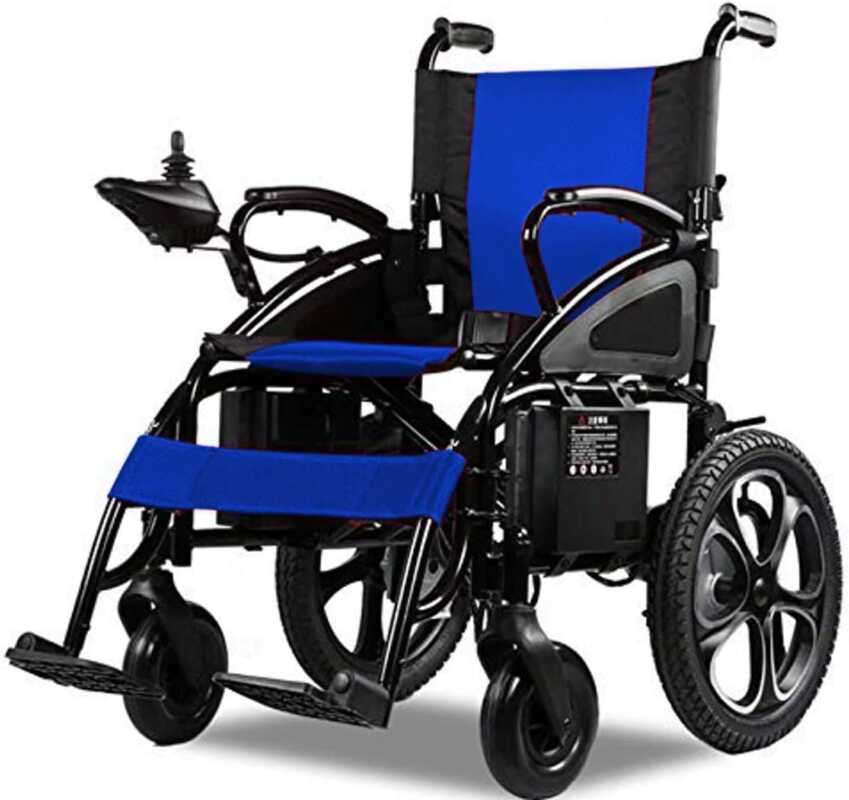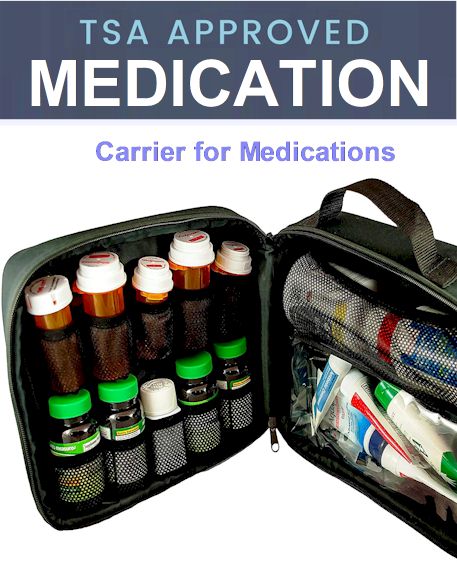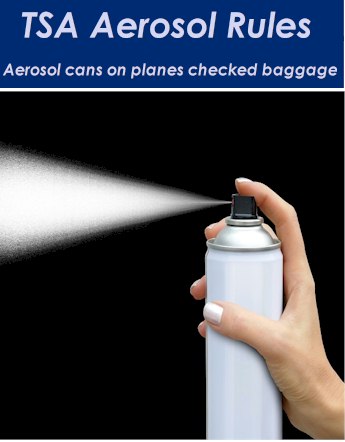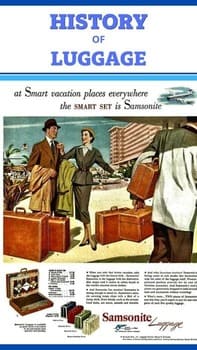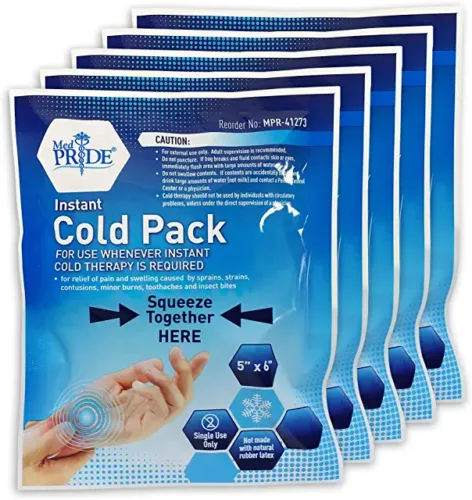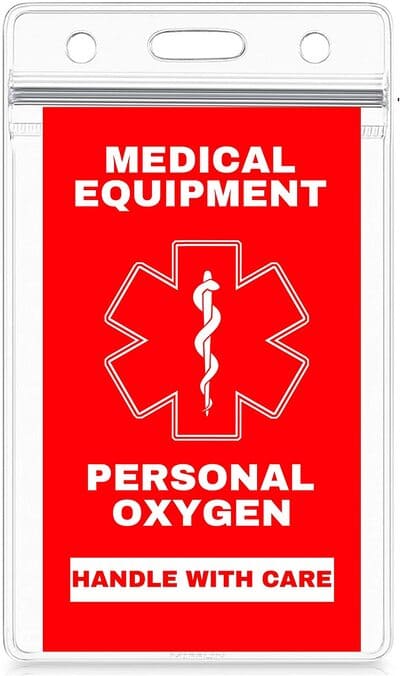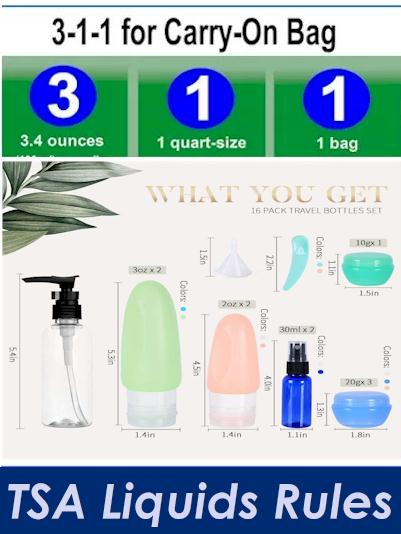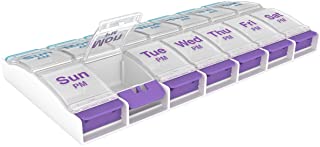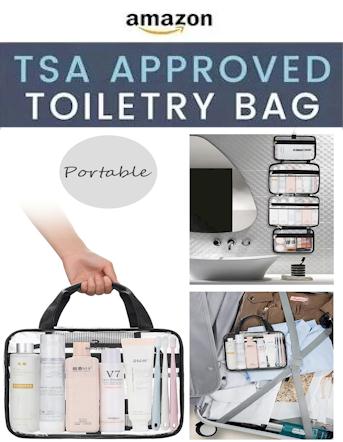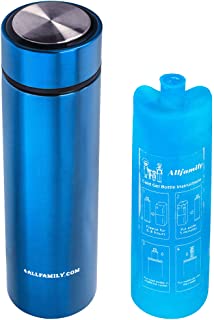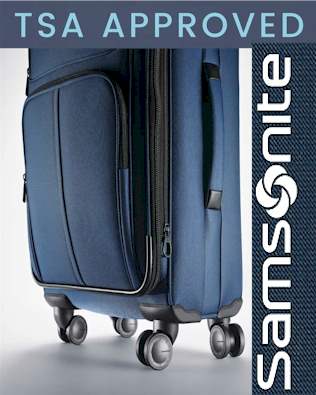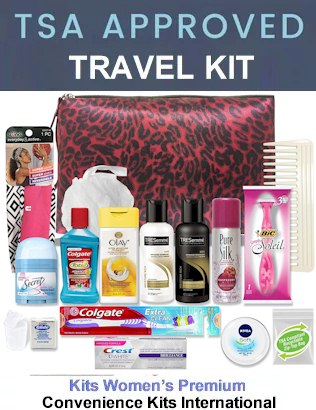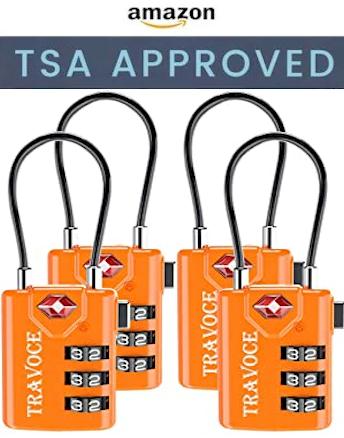TSA Medication Guidelines – Medication on Plane
Diabetes + Insulin + Oxygen + Inhalers + Notification Cards + Syringes + TSA Cares + Wheelchair Rules. + Traveling with Disabilities
What states require medication to be in prescription bottles when flying?
Texas + Minnesota + Florida + Georgia + New York
TSA disabilities, medical devices & medical conditions rules. Meds USA

People with disabilities or medical conditions and who use medical devices should not think of a Transportation Security Administration (TSA) checkpoint as a barrier to travel. Passengers can travel with an insulin pump or ostomy bag. If a person has a temporary medical condition, perhaps a broken leg, it does not prevent that person from passing through a checkpoint.
Of course, all travelers must undergo a control at the Checkpoint. Passengers with a disability or medical condition or their travel companion can consult with a TSA officer on the best way to alleviate any concerns during the screening process. Individuals can provide an officer with a TSA notification card or other medical documentation to discreetly describe the condition. Travelers can also request an adaptation to the security screening process. TSA medicine requirements: flying medication
If a passenger with a medical device, medical condition, or disability is approved for use of TSA Pre✓®, they do not need to remove their shoes, laptops, 3-1-1 liquids, belts, or lightweight jackets during the selection process. However, everyone must undergo a screening at the checkpoint using technology or a pat-down. Additionally, TSA officers can rub a person’s hands, mobility aids, equipment, and other external medical devices to test explosives using explosives trace detection technology.
Samsung Store: Frame
People with disabilities – Medical Condition TSA
People with disabilities and medical conditions are not required to remove their shoes if they have a disability or medical condition. However, the shoes must undergo additional screening, including visual / physical inspection, as well as tests for traces of explosives from footwear. Travelers can request to be seated during this part of the screening. Precheck TSA

If you have an external medical device, such as a port or feeding tube, let the security officer know about it when you reach the checkpoint. They will work with you to screen you appropriately, and to apply additional screening to the device itself while getting you through the checkpoint and headed toward your flight as quickly as possible.
What states require medication to be in prescription bottles when flying?
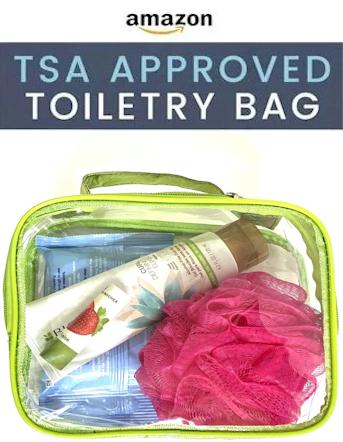
TSA allows you to travel by plane with hearing aids?
Yes, the Transportation Security Administration (TSA) allows hearing impaired people to travel by plane with hearing aids or any other assistive listening device. Here are some important points to keep in mind:
In-flight use: You can use your headphones or assistive listening devices during the entire flight, including takeoff and landing.
Security Inspection: When you go through security, you may be asked to remove your hearing aids and place them in the x-ray tray along with your other personal items. However, if you have difficulty removing them or if your hearing aids are sensitive, you can inform security officers and request an alternative inspection without having to remove them.
Communication with airline staff: If you need to communicate with airline staff during the flight, you can tell them about your hearing impairment and request additional assistance if necessary. Some airlines also offer specific services for the hearing impaired, such as closed captioning on inflight entertainment systems.
It’s important to remember that the TSA has clear guidelines to ensure flight safety, but also strives to provide an accessible and respectful experience for everyone, including those who are hearing impaired. If you have any specific concerns or questions, I would recommend contacting the airline you are flying with directly for up-to-date and accurate information on their policies and procedures.
How do I pack medication for a flight?
Can I travel with my medication?
Please notify the TSA officer that you have diabetes and are carrying your supplies with you. Insulin pumps and supplies must be accompanied by insulin, and insulin in any form or dispenser must be clearly identified. TSA insulin cold pack
TSA Liquid Medication Rules on
Carry On Bags: Yes ! (Special Instructions) – see TSA Liquid Rules
TSA allows larger amounts of medically necessary liquids, gels, and aerosols in reasonable quantities for your trip, but you must declare them to TSA officers at the checkpoint for inspection..
TSA for Contact Lens Solution
- Carry On Bags: Yes (Less than 3.4oz/100 ml allowed)
- Checked Bags: Yes
TSA allows larger amounts of medically necessary liquids, gels, and aerosols in reasonable quantities for your trip, but you must declare them to security officers at the checkpoint for inspection.
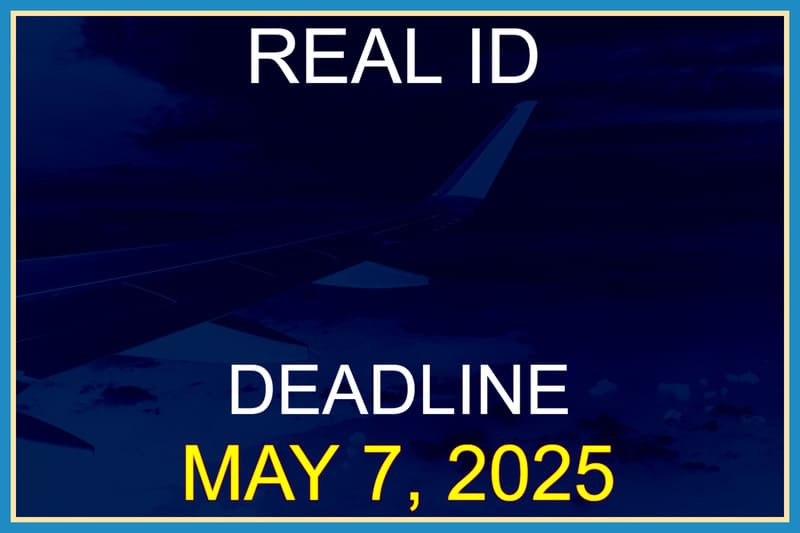
TSA liquid medication rules on: Eye Drops
- Carry On Bags: Yes (Less than 3.4oz/100 ml allowed)
- Checked Bags: Yes
TSA Pills Medication Rules
TSA Medicine Requirements (Pills)
- Carry On Bags: Yes
- Checked Bags: Yes
TSA Medicine: Nitroglycerine Pills
- Carry On Bags: Yes
- Checked Bags: Yes
Pill Cutter TSA Rules
- Carry On Bags: Yes
- Checked Bags: Yes
Inform the TSA Officer – Traveling with Prescription Medication
Inform the TSA officer that you have medically necessary liquids and/or medications and separate them from other belongings before screening begins. Also declare accessories associated with your liquid medication such as freezer packs, IV bags, pumps and syringes. Labeling these items can help facilitate the screening process.
TSA Medication Guidelines – Meds USA
- Traveling with Prescription Medication: Flying Medication
- Medication in liquid form is allowed in carry-on bags in excess of 3.4 ounces in reasonable quantities for the flight. It is not necessary to place medically required liquids in a zip-top bag. However, you must tell the officer that you have medically necessary liquids at the start of the screening checkpoint process. Medically required liquids will be subject to additional screening that could include being asked to open the container.
- You can bring your medication in pill or solid form in unlimited amounts as long as it is screened.
- You can travel with your medication in both carry-on and checked baggage. It’s highly recommended you place these items in your carry-on in the event that you need immediate access.
- TSA does not require passengers to have medications in prescription bottles, but states have individual laws regarding the labeling of prescription medication with which passengers need to comply.
- Medication is usually screened by X-ray; however, if a passenger does not want a medication X-rayed, he or she may ask for a visual inspection instead. This request must be made before any items are sent through the X-ray tunnel.
- Nitroglycerin tablets and spray (used to treat episodes of angina in people who have coronary artery disease) are permitted and have never been prohibited. TSA Medication
More Items TSA medication rules –TSA liquid medication rules
- Inform the TSA officer if you have a bone growth stimulator, spinal stimulator, neurostimulator, port, feeding tube, insulin pump, ostomy or other medical device attached to your body and where it is located before the screening process begins. You may provide the officer with the TSA notification card or other medical documentation to describe your condition.
- Submit the device for X-ray screening if you can safely disconnect. Consult with the manufacturer of the device to determine whether it can pass through the X-ray, metal detector or advanced imaging technology for screening.
- If you cannot disconnect from the device, it may require additional screening and those in sensitive areas are subject to careful and gentle inspection.
- Carry On Bags: Yes (Less than 3.4oz/100 ml allowed)
- Checked Bags: Yes
TSA allows larger amounts of medically necessary liquids, gels, and aerosols in reasonable quantities for your trip, but you must declare them to TSA officers at the checkpoint for inspection. Liquids on airplanes
We recommend, but do not require, that your medications be labeled to facilitate the security process.
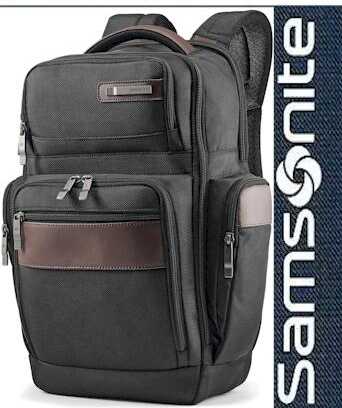
Disabilities and Medical Conditions
To ensure your security, all travelers are required to undergo screening at the checkpoint. You or your traveling companion may consult the TSA officer about the best way to relieve any concerns during the screening process. You may provide the officer with the TSA notification card or other medical documentation to describe your condition. If you have other questions or concerns about traveling with a disability please contact passenger support.
You are required to undergo screening at the checkpoint by technology or a pat-down. If your TSA PreCheck™ designation has been verified at a participating airport, you do not need to remove shoes, laptops, 3-1-1 liquids, belts, or light jackets during the screening process. However, if you are required to undergo additional screening for any reason, a pat-down may be required, which includes the removal of items such as shoes, belts, or light jackets. Also, TSA officers may swab your hands, mobility aids, equipment and other external medical devices to test for explosives using explosives trace detection technology. See TSA precheck benefits: TSA Precheck makes your check in airports more comfortable and safe. See the cost of TSA Precheck.
TSA Diabetes Medication Rules
Traveling with medical supplies is a difficult experience. If the medication includes needles, lancets and other sharp equipment, it is even more so.
Passengers in standard lanes are monitored by advanced imaging technology, a metal detector, or a pat-down. If the standard lane does not have advanced imaging technology, or if you are eligible for an expedited assessment through TSA PreCheck®, it will be monitored by a metal detector. If you do not wish to undergo a technology assessment, inform the TSA officer and they will conduct a manual Search . Pat-downs are carried out by a TSA officer of the same sex, and you can request a private search at any time.
Important: You will not be asked to remove any medical device attached to your body.

TSA Diabetes Medical Supplies Rules – Meds USA
The TSA officer will check the Medical supplies and conduct any necessary testing. If your medical condition requires it, you are allowed to travel with a juice box or other liquid over 3.4oz., but be prepared for the liquid to receive additional screening.
In the event that your insulin pump or glucose monitor is attached to your body, the device is subject to additional screening, including visual inspection. You may be required to conduct a self pat-down of the actual device, followed by a test of your hands for any trace of explosives.
If you have any additional questions or need assistance at the checkpoint, reach out to TSA Cares at 855-787-2227. Simply call 72 hours prior to your trip or visit TSA Cares website.
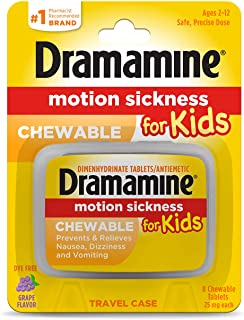
Insulin pump or Continuous glucose monitor (CGM)
To Pass with an insulin pump through airport security you must carry your airport information card with you when you travel. You can go through an airport metal detector with your insulin pump and CGM, as these devices are designed to resist common electromagnetic interference.
Go to the TSA officer and comment that the infusion set cannot be removed because it is under the skin with a tube. If you prefer to go through an airport body scan, be sure to remove your insulin pump and CGM. Do not send your devices through the x-ray machine as an alternative.
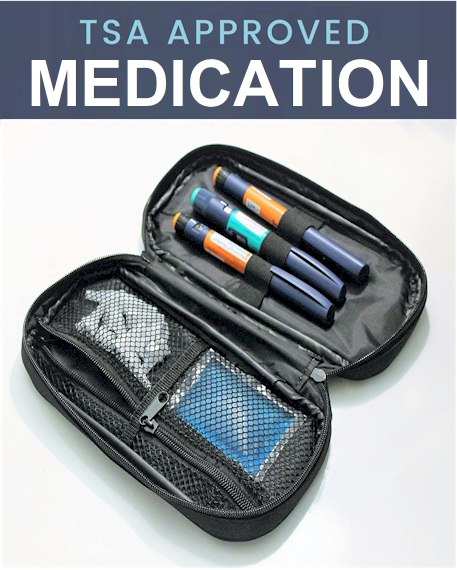
Insulin delivery devices – TSA medication Needles
You must make sure that a doctor has prescribed the insulin and needles for you. You must also provide a professional, pre-printed pharmaceutical label that identifies the drug. Travel with your original box of insulin and also with your glucose meter that shows the pharmaceutical label. You may need these items to board a plane with syringes and other insulin delivery devices. TSA Razor Rules.
TSA Insulin Rules
It is important NOT to store insulin in checked baggage, as it could be affected by severe pressure and temperature changes during the flight. Make sure to check your insulin before injecting each dose
Accessories needed to keep insulin cold, such as frozen gel packs, are allowed through the detection checkpoint. If you notice anything unusual in the appearance of your insulin, consult a medical professional.
People with diabetes can take their insulin, other medications such as glucagon, including juice and cake gel, through the TSA checkpoints, even if they are in containers larger than 3.4 ounces.
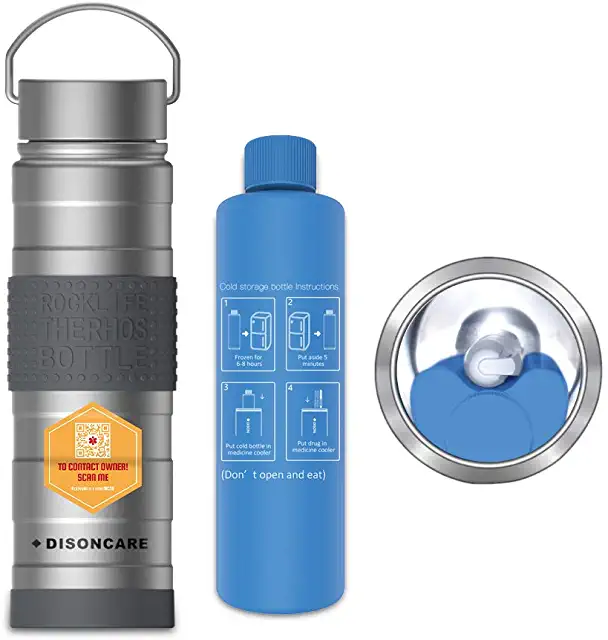
TSA Glucagon Medication Rules
Glucagon in its original pharmaceutical labeled container can be brought through airport security. The TSA allows multiple containers of liquid or gel to treat hypoglycemia. Alternatively, you may consider bringing carbohydrates, including glucose tablets, hard candy, or raisins, to make travel easier.
TSA Lancets – Meds USA
You can go through airport security with lancets as long as they are covered and taken with you with your glucose meter with the manufacturer’s name engraved on the meter.
If you are having difficulty trying to go through airport security, ask to speak to the TSA Ground Security Commissioner or its international equivalent.
check the TSA website for up to date security checkpoint and travel guidelines
We have a team ready to answer your questions @AskTSA on Twitter or Facebook Messenger from 8 a.m. to 10 p.m. ET on weekdays and 9 a.m. to 7 p.m. on ET on weekends. You may also email the TSA Contact Center or call (866) 289-9673. Representatives are available 8 a.m. to 11 p.m. ET weekdays, 8 a.m. to 10 pm. ET, weekends are 9 to 7p.m.
TSA Insulin Medication Rules – TSA insulin cold pack
- Carry On Bags: Yes (Special Instructions)
- Checked Bags: Yes
Please notify the TSA officer that you have diabetes and are carrying your supplies with you. Insulin pumps and supplies must be accompanied by insulin, and insulin in any form or dispenser must be clearly identified.
Insulin Pumps
- Carry On Bags: Yes (Special Instructions)
- Checked Bags: Yes
Please notify the TSA officer that you have diabetes and are carrying your supplies with you. Insulin pumps and supplies must be accompanied by insulin, and insulin in any form or dispenser must be clearly identified.
Insulin Supplies
Liquid Medications
- Carry On Bags: Yes (Less than 3.4oz/100 ml allowed)
- Checked Bags: Yes
TSA allows larger amounts of medically necessary liquids, gels, and aerosols in reasonable quantities for your trip, but you must declare them to security officers at the checkpoint for inspection.
Liquid Vitamins
- Carry On Bags: Yes (Less than 3.4oz/100 ml allowed)
- Checked Bags: Yes
Blood Sugar Test Kit
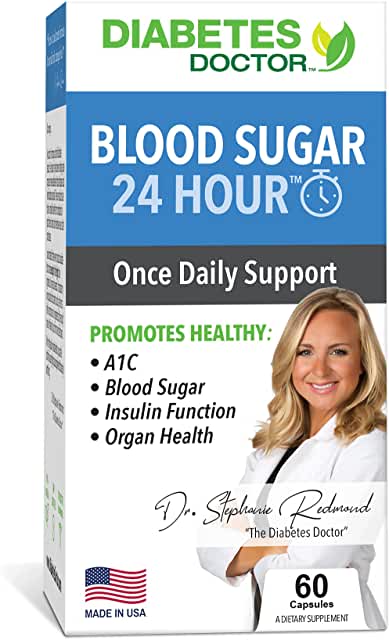
- Carry On Bags: Yes
- Checked Bags: Yes
Please notify the TSA officer that you have diabetes and are carrying your supplies with you. Insulin pumps and supplies must be accompanied by insulin, and insulin in any form or dispenser must be clearly identified. TSA Diabetes rules.
TSA traveling with injectable medication:
Unused Syringes
- Carry On Bags: Yes (Special Instructions)
- Checked Bags: Yes
TSA syringes checked baggage: Unused syringes are allowed when accompanied by injectable medication. You must declare these items to security officers at the checkpoint for inspection. We recommend, but do not require, that your medications be labeled to facilitate the security process.
What are the procedures if I have a pacemaker or metal implant?
Current imaging technology makes implant detection easier and reduces the likelihood of a pat-down. You must inform the TSA officer that you have a knee, hip, or other metal implant. Also if you have a pacemaker, defibrillator or other artificial internal medical device.
You should not be examined by a walk-through metal detector if you have an internal medical device, such as a pacemaker. Be sure to notify the security officer prior to your review. The TSA officer can then make sure you get checked in the most appropriate way, to help you move smoothly to the boarding area.
You should also consult with your doctor before flying.
If you choose not to be examined through advanced imaging technology or if you activate the alarm on the passing metal detector, you will undergo a pat-down examination.
TSA Notification cards, How To Get It
The TSA provides the TSA Notification Cards to designated disability groups. They also have an online PDF that people can fill in with their specific medical issue, then print out. Some people couple the card with a note from their doctor explaining their condition or the need for a specific medical device.

According to the medical and disabilities page offered by TSA, the card can be used for many different situations. They include sections on:
- Medications – Meds USA
- Alzheimer’s, dementia, aphasia or brain injury
- Autism or intellectual disabilities – Autism TSA Notification cards on Amazon
- Blind or low vision
- Deaf or hard of hearing
- Use of external medical devices
- Implants or internal medical devices
- Mobility disabilities, aids, and devices
- Prostheses, casts, slings, braces or support appliances
- Radioactive medication and materials
- Respiratory equipment
- Use of service dogs and animals.
Are Medical Devices Considered Carry-on Baggage?
Check with each airline. Almost all major airlines will not count your medical device as one of your personal or carry-on items. That is, you will be allowed to travel with a carry-on, a personal item, and the medical device. TSA Regulations
External Medical Devices – Flying medication
- Carry On Bags: Yes (Special Instructions)
- Checked Bags: Yes
Inform the TSA officer if you have a bone growth stimulator, spinal stimulator, neurostimulator, port, feeding tube, insulin pump, ostomy or other medical device attached to your body and where it is located before the screening process begins. You may provide the officer with the TSA notification card or other medical documentation to describe your condition.
Submit the device for X-ray screening if you can safely disconnect. Consult with the manufacturer of the device to determine whether it can pass through the X-ray, metal detector or advanced imaging technology for screening.
If you cannot disconnect from the device, it may require additional screening and those in sensitive areas are subject to careful and gentle inspection.
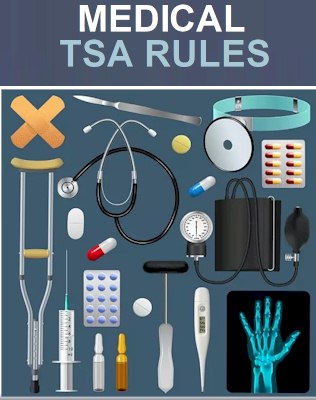
Medical Devices
- Carry On Bags: Yes
- Checked Bags: No
Medical Devices Containing Radioactive Material, implanted, ingested, injected, or fitted externally as a result of a medical treatment
Canes
- Carry On Bags: Yes
- Checked Bags: Yes
Please visit our special procedures page for information on traveling through the checkpoint with a cane.
Casts
- Carry On Bags: Yes
- Checked Bags: Yes
Crutches
- Carry On Bags: Yes
- Checked Bags: Yes
Supplements
- Carry On Bags: Yes
- Checked Bags: Yes
Support Braces (Knee, Ankle, Wrist, Back)
- Carry On Bags: Yes
- Checked Bags: Yes
Walkers
- Carry On Bags: Yes
- Checked Bags: Yes
Wheelchairs
- Carry On Bags: Yes
- Checked Bags: Yes
TSA medication: Medically Necessary Personal Oxygen –
- Carry On Bags: Yes (Special Instructions)
- Checked Bags: No
You may bring personal medical oxygen cylinders through the screening checkpoint and into the gate area. However, personal medical oxygen cylinders are not permitted in the aircraft cabin as they are considered hazardous materials by the Federal Aviation Administration.
Please contact your airline for instructions on arranging oxygen service. Airlines are not required to provide oxygen service and many do not.
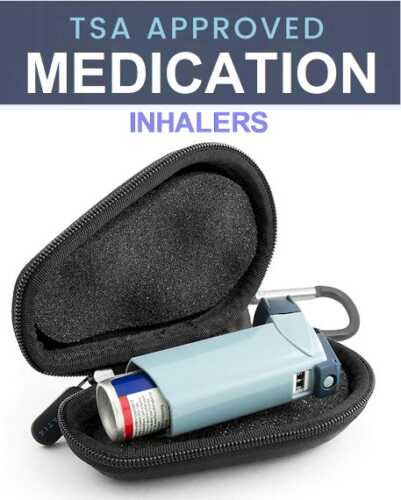
Portable Oxygen Concentrators
- Carry On Bags: Yes (Special Instructions)
- Checked Bags: Yes (Special Instructions)
Per the Federal Aviation Administration, certain portable oxygen concentrators are permitted onboard the aircraft, including Inogen One, Sequal Eclipse, Airsep Lifestyle. See a list of Portable Oxygen Concentrators that meet FAA specifications for inflight use.
Nebulizers, CPAPs, BiPAPs, and APAPs – Meds USA
- Carry On Bags: Yes (Special Instructions)
- Checked Bags: Yes
Nebulizers, CPAPs, BiPAPs and APAPs are allowed in carry-on bags but must be removed from the carrying case and undergo X-ray screening. Facemasks and tubing may remain in the case.
You may provide a clear plastic bag to place the device in for X-ray screening. A TSA officer may need to remove the device from the bag to test it for traces of explosives. Liquids associated with nebulizers are exempt from the 3-1-1 liquids rule.
TSA Medical Guidelines: Inhalers
- Carry On Bags: Yes (Special Instructions)
- Checked Bags: YesTSA allows larger amounts of medically necessary liquids, gels, and aerosols in reasonable quantities for your trip, but you must declare them to TSA officers at the checkpoint for inspection. We recommend, but do not require, that your medications be labeled to facilitate the security process.
TSA Oxygen Rules on: Traveling people with COPD
Travel planning can be especially stressful for people with COPD
Can I bring oxygen on a plane?
Medically Necessary Personal Oxygen
You may bring personal medical oxygen cylinders through the screening checkpoint and into the gate area. However, personal medical oxygen cylinders are not permitted in the aircraft cabin as they are considered hazardous materials by the Federal Aviation Administration.
Please contact your airline for instructions on arranging oxygen service. Airlines are not required to provide oxygen service and many do not.
For more prohibited items, please go to the Medical Rules
Are portable oxygen concentrators allowed on airplanes?
The only oxygen equipment allowed on an airplane is the portable oxygen concentrator (POC). If you need oxygen in flight, you must take a portable oxygen concentrator with you, and , you must let your airline know ahead of time. They may require a doctor’s letter to verify the need for the POC on the plane.

Checked Bags: No – Except for personal medical oxygen cylinders, you can only carry an EMPTY compressed gas cylinder onboard a plane. To be permitted (in either carry-on or checked baggage), it must be clearly visible to the TSA officer that the cylinder is empty.
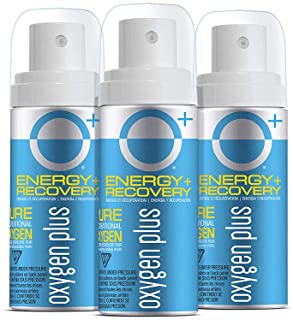
What airlines allow oxygen tanks?
How high can you fly with oxygen?
Medical Portable Oxygen Cylinder Carrier
Camera-Style Horizontal Shoulder Bag for Carrying M6, C/M9 or B Oxygen Cylinders
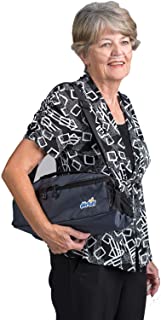
Travel planning COPD oxygen therapy
Can you fly with portable oxygen?
Yes. Travel planning can be especially stressful for people with COPD (chronic obstructive pulmonary disease) or other health conditions that require oxygen therapy. The following steps can be helpful with the process:
- Call your local oxygen supplier one to two weeks in advance to arrange for your oxygen supply while you are traveling. Your needs will vary according to your mode of transportation and length of stay at your destination.
- If traveling by air, book far in advance because airlines allow only a limited number of people traveling with oxygen per flight.
- Take antiseptic hand-washing packets or gel to help avoid picking up bacterial or viral infections. Also wash hands with soap and water frequently.
- If you are traveling to an area of high altitude, plan ahead for an oxygen supply at your destination.
To learn more about diagnosing and living well with COPD, read Chronic Obstructive Pulmonary Disease: Treating emphysema and chronic bronchitis, a Special Health Report from Harvard Medical School. Traveling with oxygen requires advanced planning
Source: Harvard Health Publishing from Harvard Medical School.
Others TSA Medical Guidelines
TSA Life Vest regulations
- Carry On Bags: Yes
- Checked Bags: Yes
You may bring a life vest with up to two CO2 cartridges inside, plus two spare cartridges in your carry-on or checked bag.
You may not transport CO2 cartridges without the associated lifejacket
EpiPens
- Carry On Bags: Yes
- Checked Bags: Yes
TSA allows larger amounts of medically necessary liquids, gels, and aerosols in reasonable quantities for your trip, but you must declare them to TSA officers at the checkpoint for inspection.
Flying with Prescription Drugs – Meds USA
TSA Medical Marijuana
- Carry On Bags: Yes (Special Instructions)
- Checked Bags: Yes (Special Instructions)
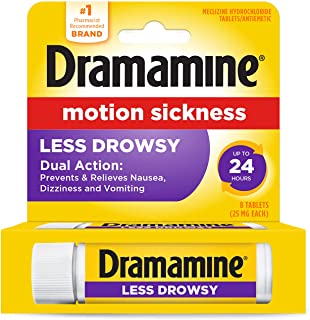
Marijuana and certain cannabis infused products, including some Cannabidiol (CBD) oil, remain illegal under federal law except for products that contain no more than 0.3 percent THC on a dry weight basis or that are approved by FDA. (See the Agriculture Improvement Act of 2018, Pub. L. 115-334.) TSA officers are required to report any suspected violations of law to local, state or federal authorities.
TSA’s screening procedures are focused on security and are designed to detect potential threats to aviation and passengers. Accordingly, TSA security officers do not search for marijuana or other illegal drugs, but if any illegal substance is discovered during security screening, TSA will refer the matter to a law enforcement officer. More info if you travel Alabama DHS Website
Medical Masks
- Carry On Bags: Yes
- Checked Bags: Yes
Thermometer
- Carry On Bags: Yes
- Checked Bags: Yes
TSA medical guidelines : Vitamins
- Carry On Bags: Yes
- Checked Bags: Yes
Do prescription drugs have to be in original containers?
Prescription medications should be in their original containers with the doctor’s prescription printed on the container. It is advised that you travel with no more than personal use quantities, a rule of thumb is no more than a 90 day supply
Is it OK to put different pills in the same bottle?
Can I take unmarked pills on a plane?
You can bring your medication in pill or solid form in unlimited amounts as long as it is screened. You can travel with your medication in both carry-on and checked baggage. It’s highly recommended you place these items in your carry-on in the event that you need immediate access.
Prescription medications should be in their original containers with the doctor’s prescription printed on the container. It is advised that you travel with no more than personal use quantities, a rule of thumb is no more than a 90 day supply. If your medications or devices are not in their original containers, you must have a copy of your prescription with you or a letter from your doctor. A valid prescription or doctors note is required on all medication entering the U.S.
TSA Cares: Traveling with Prescription Medication
Can I bring ibuprofen on a plane?
What are the rules for Onboard power for medical devices
We recommend you bring any necessary, fully-charged batteries to power your medical devices throughout your flight. Don’t depend on the availability of a power outlet to support your device.
- If available, power outlets may be used for medical devices
- The use of onboard power might require a DC power adapter
Can you mix pills in the same bottle?
Are you traveling with medication and have questions about the airport checkpoint screening process?
TSA Cares is a helpline that provides travelers with disabilities, medical conditions and other special circumstances additional assistance during the security screening process. Call 72 hours prior at (855) 787-2227 on weekdays, 8 a.m. to 11 p.m. ET and weekends/holidays, 9 a.m. to 8 p.m. ET. Learn what to expect on your next flight in this TSA Cares video.
Florida + Minnesota + Georgia + Texas + New York

Is it illegal to carry prescription drugs without the bottle in Florida?
Can Carry prescription Medication without the bottle in New York State?
Doctors in New York state no longer write paper prescriptions but order medications online from pharmacies. This is to prevent forged documents. There is nothing wrong with having a doctor’s note or a prescription if such things are available. Having the original bottles with the info on the label was a good suggestion.
Prescription medications should be in their original containers with the doctor’s prescription printed on the container. It is advised that you travel with no more than personal use quantities, a rule of thumb is no more than a 90 day supply. If your medications or devices are not in their original containers, you must have a copy of your prescription with you or a letter from your doctor. A valid prescription or doctors note is required on all medication.
Is it illegal to carry prescription drugs without the bottle in Minnesota?
In Minnesota, the Rules for transporting medications are quite strict, stating that they must be carried in their original bottle or container along with the attached prescription. If medications are not transported according to the rules, an individual may be charged with a felony offense.
People with chronic illnesses commonly carry their prescription medications with them when they leave the house. Although their medications are perfectly legal, law enforcement has a difficult task of distinguishing between legal and illegal drugs without medical proof. Even aspirin and antacids can be hard to identify without proper packaging. When transporting medications, Minnesota law states the following:
- Carry proof of a prescription by a licensed medical physician
- and Carry proof that identifies the medications
- Carry all medications on the controlled substance list in original Bottles or containers with prescriptions attached
When medications are transported without proper documentation, law enforcement may suspect drug abuse, drug possession, or drug sales which can lead to arrest, fines, and even jail time.

Is it illegal to carry prescription drugs without the bottle in Georgia?
In Georgia, it is illegal to carry prescription drugs in anything other than the original container. Even if your prescription is in a pillbox or container,you could be charged with possession of illegal prescriptions. In many situations, this crime is charged along with DUI, theft, or a related offense. Prescription Drugs Not in Original Container : In Georgia, according to O.C.G.A. § 16-13-75, possession of controlled substances or dangerous drugs by anyone other than the individual is only legal if the drugs are in the original container that was dispensed by the pharmacist.
Carry prescription drugs without the bottle in Texas
Texas has no express law on this subject. The problem is that if you are stopped by the police and found in possession of your prescription medication outside of its original container, you can still be arrested for possession of a dangerous drug. This is a Class A misdemeanor in Texas, which carries a potential jail sentence of one year, in addition to a maximum fine of $4,000.
Of course, you are unlikely to actually be convicted if you can prove you have a valid, current prescription. If for some reason you do find it necessary to travel with your medications outside of their original container–for example, if you need to take multiple drugs and it would be unwieldy to carry a group of bottles–make sure you keep copies of your written prescriptions in your wallet or car. This way, if you are detained by the police, you can avoid a potential misunderstanding.
Does TSA check your pills?
Can I pack my meds in a pill case?
TSA does not require passengers to have medications in prescription bottles, but states have individual laws regarding the labeling of prescription medication with which passengers need to comply.
One of the more popular questions we get from travelers is: “Can I travel with my medication?” The answer is yes, with some qualifiers. Here are a few tips that you might find helpful.
It is not necessary to present your medication to, or notify an officer about any medication you are traveling with unless it is in liquid form (See next bullet).
- Medication in liquid form is allowed in carry-on bags in excess of 3.4 ounces in reasonable quantities for the flight. It is not necessary to place medically required liquids in a zip-top bag. However, you must tell the officer that you have medically necessary liquids at the start of the screening checkpoint process. Medically required liquids will be subject to additional screening that could include being asked to open the container.
- You can bring your medication in pill or solid form in unlimited amounts as long as it is screened.
- You can travel with your medication in both carry-on and checked baggage. It’s highly recommended you place these items in your carry-on in the event that you need immediate access.
- Medication is usually screened by X-ray; however, if a passenger does not want a medication X-rayed, he or she may ask for a visual inspection instead. This request must be made before any items are sent through the X-ray tunnel.
- Nitroglycerin tablets and spray (used to treat episodes of angina in people who have coronary artery disease) are permitted and have never been prohibited.
Nitroglycerine Pills
What states require medication to be in prescription bottles when flying
FDA: What else should you know about Traveling with Prescription Medication?
If you have questions for FDA about Traveling with Prescription Medication, contact the Division of Drug Information at 855-543-DRUG (3784) or email us at [email protected]. Additional Frequently Asked Questions related to the FDA’s Personal Importation Policy are online at: https://www.fda.gov/media/83411/download.
The Drug Enforcement Agency (DEA) has other restrictions on bringing controlled substances into the country. Review those rules here: www.deadiversion.usdoj.gov/21cfr/cfr/1301/1301_26.htm.
Contact TSA if you have questions about carrying prescription medications in your luggage or carry-on when flying: www.tsa.gov/contact/. For more information: www.tsa.gov/travel/special-procedures. You can also follow TSA’s blog Travel Tips Tuesday.
Review the many webpages dedicated to travel questions provided by the U.S. Customs and Border Protection: https://www.cbp.gov/travel
What states require medication to be in prescription bottles when flying
TSA Wheelchair Rules
What are the TSA procedures for wheelchair users?
Passengers do not need to get out of their wheelchair when going through a TSA security check. If you go through security in a wheelchair and cannot walk through the metal detector, you will receive a search through a pat-down.
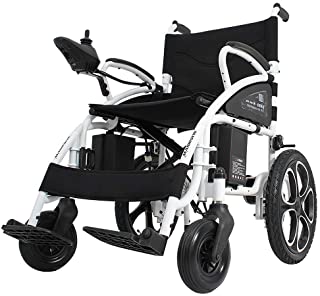
Wheelchairs – Can you take medicine on a plane

List of TSA tips regarding the registration procedure: TSA Wheelchair Rules
- The search must be conducted by an officer of the same sex. Sometimes passengers must wait for an officer of the same sex to be available.
- The passenger can request a private screening at any time and a private screening should be offered when the officer needs to search sensitive areas.
- During a private inspection, another officer will also be present and the passenger may be accompanied by a companion of her choice.
- A passenger should inform an officer before he begins the search of any difficulty in raising his arms, remaining in the required position for a search, or any area of the body that hurts to touch.
- A passenger should not be asked to remove or lift any item of clothing to reveal a sensitive area of the body.
In addition to the search, the TSA may use technology to test for traces of explosive material. If explosive material is detected, the passenger must undergo additional screening.
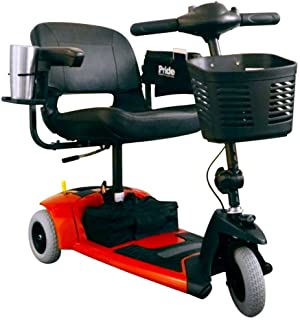
What are the TSA procedures for travelers with disabilities?
Regardless of how you are searched (metal detector or pat-down), your wheelchair or personal scooter will be searched, including seat cushions and any non-removable bags or fanny packs.
It will also be tested for traces of explosives, and removable bags will need to undergo an X-ray examination.
What are the TSA procedures for children in wheelchairs or with disabilities?
If you are traveling with a child who has a disability, the TSA will allow parents to take children under the age of 12 through the metal detector. Doing so can allow the child to forego what could be a stressful or confusing screening procedure.

Travelers can also sign up for TSA PreCheck or Global Entry – these trusted traveler programs require extensive FBI background checks, but provide expedited security checks at the airport.
For TSA PreCheck members, expedited inspection consists only of an examination of the power wheelchair and a hand swab for explosives. With TSA PreCheck, there is no longer a need to go through a full body search and traffic often goes through TSA security checkpoint in less than two minutes.
How do people in wheelchairs go through TSA?
Can I bring my wheelchair on the plane?
What to do if you need a wheelchair at the airport?
How do I get a TSA disability alert card?
TSA provides TSA Notification Cards to designated disability groups. They also have an online PDF that people can fill out with their specific medical issue and then print. Some people combine the card with a note from their doctor explaining their condition or the need for a specific medical device.
Traveling with Disabilities
OVERVIEW
According to the Americans with Disabilities Act, a person has a disability if he or she has a physical or mental impairment that substantially limits at least 1 major life activity. With proper preparation, many travelers with disabilities can travel internationally. Some travelers with disabilities, such as those with mobility limitations, vision or hearing loss, or cognitive disabilities may require special attention and adaptation of transportation services. The following recommendations may assist in ensuring safe, accessible travel for travelers with disabilities:
- Assess each international itinerary on an individual basis, in consultation with specialized travel agencies or tour operators.
- Consult travel health providers for additional recommendations.
- Plan ahead to ensure that necessary accommodations are available throughout the entire trip.
BEFORE TRAVEL
Each country has its own standard of accessibility for people with disabilities. Several websites can help the traveler answer questions about accessibility. Visit https://travel.state.gov/content/travel/en/international-travel/International-Travel-Country-Information-Pages.html and enter a country or area to find information on accessibility for travelers with mobility limitations in the “Local Laws & Special Circumstances” section. Unlike the United States, many countries do not legally require accommodations for people with disabilities. Read section 6 of the State Department’s Human Rights Report for information of the human rights and social service framework protecting citizens with disabilities in the destination country (www.state.gov/j/drl/rls/hrrpt/index.htm).
- Consult with travel agents, hotels, airlines or cruise ship companies to learn about services during the trip and at the destination, including for service animals. Websites such as Mobility International USA (www.miusa.org) will have links to overseas disability organizations.
- Consult an organization that specializes in travel for people with intellectual disabilities (http://newdirectionstravel.org).
- Consider enrolling in the Smart Traveler Enrollment Program (STEP) to receive security messages and to make it easier for the US embassy or consulate to help in an emergency (https://step.state.gov/step/).
Medical Considerations – Traveling with Disabilities
- If the traveler’s health insurance plan does not provide coverage overseas, the US State Department strongly recommends purchasing supplemental medical insurance and medical evacuation plans.
- Visit the web page “Your Health Abroad” for information about international travel (https://travel.state.gov/content/travel/en/international-travel/before-you-go/your-health-abroad.html).
- See the Travelers’ Health page of the Centers for Disease Control website for health actions before, during, and after travel (www.cdc.gov/travel).
- Travelers should carry medical alert information and a letter from their health care provider describing medical conditions, medications, potential complications, and other pertinent medical information.
- Travelers should carry sufficient prescription medication to last the entire trip, including extra medicine in case of delay. Always carry prescriptions in their labeled containers, not in a pill pack.
- Some prescription medications that are legal in the United States are illegal in other countries. See https://travel.state.gov/content/travel/en/international-travel/International-Travel-Country-Information-Pages.html for the specific area where you will be traveling, and contact the foreign embassy or consulate for more information (www.usembassy.gov).
Assistive Equipment
- Call the Transportation Security Administration’s (TSA) helpline for travelers with disabilities and medical conditions at 855-787-2227 (toll-free), federal relay 711, or check TSA’s website, for answers to questions about screening policies, procedures, and the security checkpoints.
- Find out if there are specific policies for devices such as wheelchairs, portable machines, batteries, respirators, and oxygen.
- Consider renting wheelchairs and medical equipment at the destination. Research the availability of wheelchair and medical equipment providers. Websites such as Mobility International USA (www.miusa.org) or the European Network for Accessible Tourism (www.accessibletourism.org) will have links to overseas medical equipment providers.
- Consider the use of manual versus power wheelchairs. The country voltage, type of electrical plug, and reliability of the electrical infrastructure at the destination country may make one type of wheelchair preferable over another.
Service Animals
- Contact the US embassy or consulate of the destination country for information on possible restrictions and cultural norms about service animals (www.usembassy.gov).
- Find out about any quarantine, vaccination, and documentation requirements.
- Consult veterinarians about tips for traveling with service animals.
- Contact destination hotels to make sure they will accommodate service animals.
AIR TRAVEL
Many non-US airlines voluntarily adhere to codes of practice that are similar to US legislation based on guidelines from the International Civil Aviation Organization. However, these guidelines are not identical to those outlined in US legislation, and the degree of implementation may vary by airline and location. Travelers planning to fly between foreign countries or within a foreign country while abroad should check with the overseas airlines to ensure that the carriers adhere to accessibility standards adequate for their needs.
Regulations and Codes
In 1986, Congress passed the Air Carrier Access Act (ACAA) to ensure that people with disabilities are treated without discrimination in a way consistent with the safe carriage of all air passengers. The regulations established by the Department of Transportation (DOT) apply to all flights of US airlines and flights to or from the United States by foreign carriers.
Flight Information and Reservation Services
If an airline carrier provides telephone reservation and information service to the public, these services must be available to people who are deaf or hard-of-hearing through a telecommunications device for the deaf (TDD), telecommunications relay services, or other technology.
Airports
As part of the ACAA, DOT rules require any airport terminal facility that receives federal financial assistance to enable or ensure high-contrast captioning. The captioning is required at all times on televisions and other audio-visual displays capable of displaying captions located in any common area of the terminal to which passengers have access, including the gate area, ticketing area, passenger lounges, and leased commercial shop and restaurant spaces.
Security
The TSA has established a program for screening travelers with disabilities and their equipment, mobility aids, and devices. TSA permits prescriptions, liquid medications, and other liquids needed by people with disabilities and medical conditions. Travelers who have disabilities or medical conditions that may affect TSA screening may use notification cards to communicate with the officer. Travelers can learn more about the TSA guidelines for travelers with disabilities at TSA travel special-procedures and print the card at www.tsa.gov/sites/default/files/disability_notification_card_508.pdf.
As with other people with disabilities or medical conditions, travelers who are deaf or hard-of-hearing can provide the TSA officer with a notification card or other medical documentation that describes their condition and informs the officer about the need for assistance with the screening process. Travelers are not required to remove any hearing aids or external cochlear implant devices. Additional screening, including a pat-down or device inspection, may be required if assistance devices alarm security technology.
Ticket Counter, Gate, and Customer Service Desks
Current ACAA rules require people who are deaf or hard-of-hearing to self-identify in order to ensure the receipt of accessible information. Passenger information, including information about flight schedule changes, connections, gate assignments and baggage claim must be transmitted in a timely manner through an accessible method of communication to those who have identified themselves as having hearing impairment. Passengers with impaired hearing must identify themselves to carrier personnel at the gate area or the customer service desk even if they have already done so at the ticketing area. The rule does not require a sign language interpreter to ensure that a passenger who is deaf receives all pertinent information.
In-Flight
All audio-visual displays played on aircraft for safety and informational purposes must use captioning or a sign language interpreter insert as part of the video presentation. The captioning must be in the predominant languages in which the carrier communicates with passengers on the flight. The current ACAA rule does not require the captioning of in-flight entertainment.
Boarding and Deplaning
There may be no jetway with smaller airplanes, and travelers who use wheelchairs may need to be manually lifted up or down the stairs. Some airports have adapted hoists or lifts. An aisle chair is usually required to board and deplane. Travelers should be sure to mention they need an aisle chair, both when reserving tickets and when checking in at the airport.
Assistance and Accommodations
Because of the ACAA, carriers may not refuse transportation on the basis of a disability. However, there are a few exceptions; for example, the carrier may refuse transportation if the person with a disability would endanger the health or safety of other passengers or if transporting the person would be a violation of Federal Aviation Administration safety rules. Travelers and their clinicians can learn more about these exceptions and other aspects of the ACAA at http://airconsumer.ost.dot.gov/publications/horizons.htm.
Air carriers are also obliged to accept a declaration by a passenger that he or she is self-reliant. A medical certificate (a written statement from the passenger’s health care provider saying that the passenger is capable of completing the flight safely without requiring extraordinary medical care or endangering other passengers) can be required only in specific situations. If a person intends to travel with a possible communicable disease, will require a stretcher or oxygen, or if the person’s medical condition can be reasonably expected to affect the operation of the flight, a medical certificate is typically required.
Under the guidelines of the ACAA, when a traveler with disability requests assistance, the airline is obliged to meet certain accessibility requirements. For example, carriers must provide access to the aircraft door (preferably by a level entry bridge), an aisle seat, and a seat with removable armrests. However, aircraft with <30 seats are generally exempt from these requirements. Any aircraft with >60 seats must have an onboard wheelchair (aisle chair), and personnel must help move the wheelchair from a seat to the lavatory area. Airline personnel are not required to transfer passengers from wheelchair to wheelchair, wheelchair to aircraft seat, or wheelchair to lavatory seat. In addition, airline personnel are not obliged to assist with feeding, visiting the lavatory, or dispensing medication to travelers. Only wide-body aircraft with ≥2 aisles are required to have fully accessible lavatories. Travelers with disabilities who require assistance should travel with a companion or attendant. Without reason, however, carriers may not require a person with a disability to travel with an attendant.
Airlines may not require advance notice of a passenger with a disability. They may, however, require up to 48 hours advance notice and 1-hour advance check-in for certain accommodations that require preparation time, such as the following services (if they are available on the flight):
- Medical oxygen for use on board the aircraft
- Carriage of an incubator
- Hook-up for a respirator to the aircraft electrical power supply
- Accommodation for a passenger who must travel in a stretcher
- Transportation of an electric wheelchair on an aircraft with <60 seats
- Provision by the airline of hazardous material packaging for batteries used in wheelchairs or other assistive devices
- Accommodation for a group of ≥10 people with disabilities who travel as a group
- Provision of an onboard wheelchair (aisle chair) for use on an aircraft that does not have an accessible lavatory
DOT maintains a toll-free hotline (800-778-4838 [voice] or 800-455-9880 [TTY], available 9 am to 5 pm Eastern Time, Monday through Friday, except federal holidays) to provide general information to consumers about the rights of air travelers with disabilities and to assist air travelers with time-sensitive disability-related issues.
CRUISE SHIPS
US companies or entities conducting programs or tours on cruise ships have obligations regarding access for travelers with disabilities, even if the ship itself is of foreign registry. However, all travelers with disabilities should check with individual cruise lines regarding availability of requested or needed items before booking. Cruise operators and travel agents that cater to travelers with special needs also exist.
Travelers with Disabilities. Travel GOV
Research Your Destination
Each country has its own laws regarding accessibility for, or discrimination against, persons with physical, sensory, intellectual, or mental disabilities. Before you travel, visit travel.state.gov/destination and enter the name of a country or area to find information for travelers with disabilities in the Local Laws & Special Circumstances section. Unlike the United States, enforcement of accessibility and other laws relating to persons with disabilities is inconsistent.
Preparing for your trip is critical:
- Consult your travel agent, hotel, airline, or cruise ship company to learn about services during your trip and your destination, including specific requirements for service animals. View Mobility International USA’s tip sheet for Guide Dogs and International Travel.
- Call the Transportation Security Administration’s (TSA) helpline for travelers with disabilities and medical conditions at 855-787-2227 (toll-free) to request assistance with the security screening process, or check TSA’s website, TSA Cares. They can answer questions about screening policies, procedures, and the security checkpoints.
- Check websites such as Mobility International USA to find overseas disability organizations.
- Read Section 6 of the State Department’s annual Human Rights Report for information about the human rights and social service framework protecting the rights of individuals with disabilities in your destination country.
Service Animals
Before traveling, you should research taking a service animal abroad:
- Contact your destination country’s nearest embassy or consulate for information on possible legal restrictions, accessibility issues, or cultural norms that may affect your travel with your service animal.
- Find out about any quarantine, vaccination, and documentation requirements that your destination, and any transit countries, may have.
- Talk with your vet about tips for traveling with your service animal.
- Make sure your hotel will accommodate your service animal.
- Confirm with your airline whether it has any additional requirements.
Assistive Equipment
Research whether the airline follows specific policies for devices such as wheelchairs, portable machines, batteries, respirators, and oxygen. The airport/security screening in the departing and arriving airports may also have specific policies.
- Research the availability of wheelchair and/or medical equipment providers and repair services.
-
Consider the following regarding wheelchairs:
- Manual vs. power
- Supplies such as wheelchair tires, tubes, and patch kits – consider bringing extra as these may not be available at your destination.
- Gate checking – Always gate check your wheelchair and retain the receipt
- Airline policies on damaged equipment
- Voltage of electricity at destination vs. voltage of power wheelchair
- Type of electrical plug
- Reliability of electrical system 24/7
Medical Consideration
Consult with your physician before traveling overseas to identify health care needs during your trip. If your health insurance plan does not provide coverage overseas, we strongly recommend supplemental medical insurance and medical evacuation plans. Remember that Medicare does not provide coverage overseas. Private insurance plans may require you to pay for costs directly before getting reimbursed.
- Visit our webpage, Your Health Abroad.
- See the Travelers’ Health page of the Centers for Disease Control website.
- Carry medical alert information and a letter from your health care provider describing your medical condition, medications, potential complications, and other pertinent medical information.
- Carry sufficient prescription medication to last your entire trip, including extra medicine in case of delay. Some prescription medications that are legal in the United States are illegal in other countries. See travel.state.gov/destination for the specific area where you will be traveling, and contact the foreign embassy or consulate for more information.
- Always carry your prescriptions in their labeled containers, not in a pill pack.
- Pack medications in your carry-on luggage. Avoid packing medications in checked luggage, in case your luggage is lost or delayed.
- For medications that require refrigeration, consider how to best transport your medication (i.e., use an insulated bag; request a hotel room with a small refrigerator, etc.)
- Consider bringing extra supplies such as incontinence supplies, diabetes test strips, hearing aid batteries, etc., as these may not be available at your destination.
- Check out Mobility International USA’s tip sheet on health coverage while overseas.
Traveling with Medication : U.S. Customs and Border Protection
Prescription medications should be in their original containers with the doctor’s prescription printed on the container. It is advised that you travel with no more than personal use quantities, a rule of thumb is no more than a 90 day supply. If your medications or devices are not in their original containers, you must have a copy of your prescription with you or a letter from your doctor. A valid prescription or doctors note is required on all medication entering the United States.
The U.S. Food & Drug Administration (FDA) is responsible for pharmaceutical admissibility determinations. If you have any questions as to whether a specific pharmaceutical may be imported into the United States, visit the FDA’s website, or call (301) 796-0356.
If you are traveling with medication and have questions about the airport checkpoint screening process, and other special circumstances, you may call the Transportation Security Administration (TSA), 72 hours prior at (855) 787-2227 on weekdays, 8 a.m. to 11 p.m. ET and weekends/holidays, 9 a.m. to 8 p.m. ET.
To learn what to expect on your next flight, view the video TSA Cares: Traveling with Medication | Transportation Security Administration.
For additional information about traveling with medication, visit FDA’s web page on 5 Tips for Traveling to the U.S with Medications.
-
For items not listed here, our AskTSA team looks forward to answering your questions 365 days a year; live assistance is available from 8 am – 6 pm (ET).
- Twitter: @AskTSA
- Facebook Messenger: www.fb.com/AskTSA
- Apple Business Chat: AskTSA
- Text Message: Text “Travel” to AskTSA (275-872)
TSA’s Five Top Resources
TSA has five main resources for travelers with disabilities or individuals who travel with medical devices or medical conditions to ensure that they can get through the security screening process successfully, respectfully and efficiently. They include the TSA Cares helpline, the TSA Contact Center, Passenger Support Specialists, information posted on the TSA website and an interactive Twitter and Facebook Messenger account.
- TSA’s toll free helpline, called TSA Cares, enables travelers or families of passengers with disabilities and medical conditions to call 1-855-787-2227 with any questions about screening policies, procedures and what to expect at the security checkpoint 72 hours prior to traveling. The helpline is staffed weekdays from 8 a.m. to 11 p.m. ET and from 9 a.m. to 8 p.m. on weekends and holidays. Injured service members and veterans including individuals associated with the Wounded Warrior Program may contact TSA Cares to help facilitate the screening process. By asking questions on the helpline, travelers arrive at the airport knowing the screening process and procedures that they will experience, thus reducing anxiety of the unknown.
- The TSA Contact Center is a customer call center that is available to answer questions by e-mail or toll free phone at 1-866-289-9673. Staff is available from 8 a.m. to 11 p.m. weekdays and 9 a.m. to 8 p.m. weekends/holidays; and an automated service is available 24 hours a day, seven days a week.
- Passenger Support Specialists are highly trained TSA officers at airports who have special training in successfully engaging with, and screening, individuals who have disabilities or medical conditions, or who travel with medical devices. Travelers requiring accommodations to the screening process, or who are concerned about the security screening process at the airport may ask for a Passenger Support Specialist or a Supervisory TSA Officer who can provide on-the-spot assistance.
- The TSA website has an entire section devoted to traveling with disabilities, medical conditions and medical devices. The link provides a host of information via a drop-down menu that allows viewers of the web page to select detailed information on the specific situation with which they have a question. Situations include traveling with medications; Alzheimer’s, dementia, aphasia or a brain injury; autism or intellectual disabilities, blind or low vision; deaf or hard of hearing; use of external medical devices; implants and use of internal medical devices; mobility disabilities, aids and devices; prostheses, casts, braces or support appliances; recent use of radioactive medication and materials; respiratory equipment; and use of service dogs and animals.
- A helpful interactive X account, @AskTSA, allows individuals to tweet a question about the screening process for medical devices and for medical conditions, from traveling with a temporary condition (e.g., a cast on a broken arm or leg) to traveling through a checkpoint wearing an ostomy pouch beneath one’s clothing. Travelers with questions about the screening process can contact a TSA employee for live assistance 365 days a year via Twitter. Tweet questions and comments to @AskTSA from 8 a.m. to 10 p.m. weekdays and 9 a.m. to 7 p.m. weekends/holidays. Or, the traveler may send the question to TSA via Facebook Messenger.
Related
- TSA Precheck eligibility determined
- Amazon USA Best Sellers
- TSA History
- TSA Real ID
- Ancient Sea Voyages





